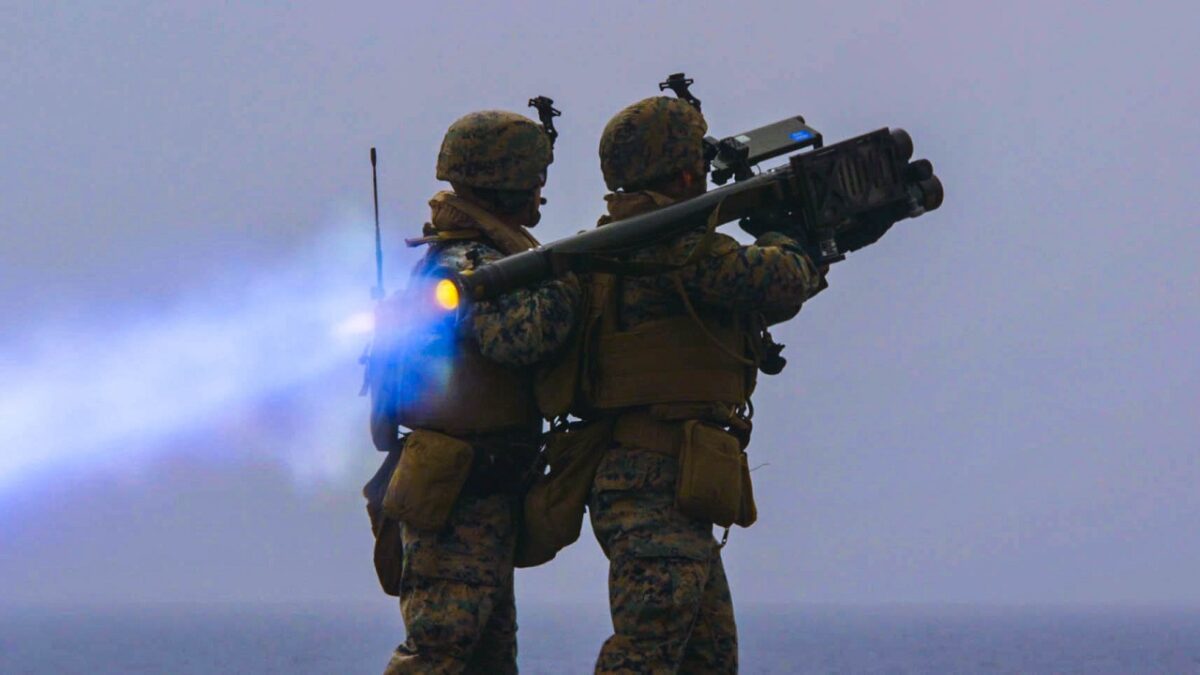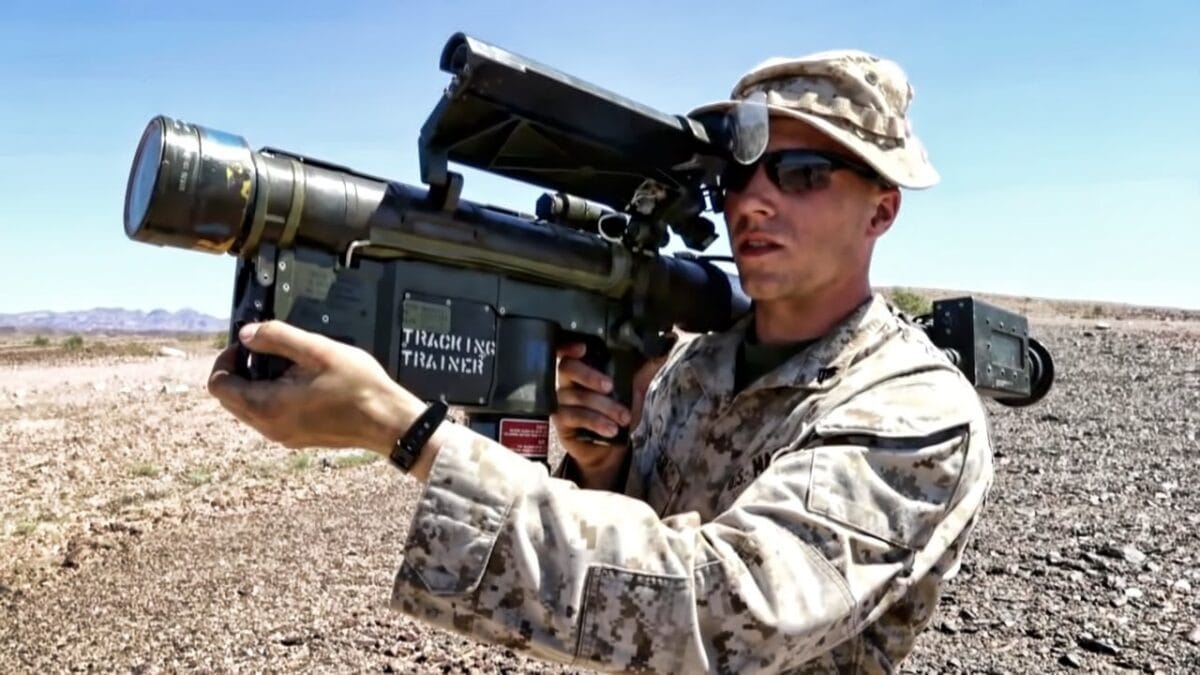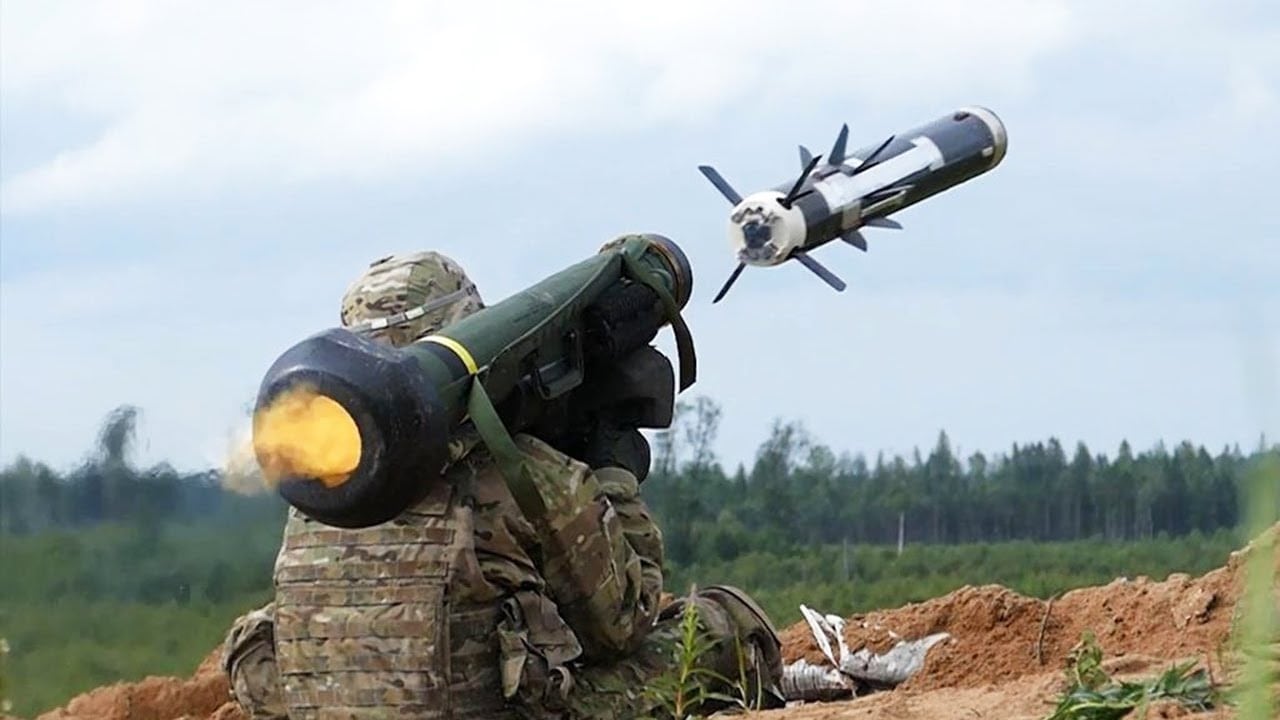You’ve heard of both the Javelin and the Stinger, which have been particularly lethal in Ukraine. The Javelin is an anti-tank weapon, while the Stinger is an anti-aircraft missile.
What If I told you they have been tested in combination mode? That’s right. Take a Javelin launcher and load it with a Stinger missile, and you have another shoulder-fired option to destroy enemy aircraft and ground targets.
Javelin and Stinger: A Powerful One-Two
The Stinger is a heat-seeking man-portable surface-to-air missile. The Javelin is primarily used for surface-to-surface targeting, although it can sometimes engage low- and slow-flying helicopters. Their use as a dual system has been under evaluation since 2020, and the Javelin/Stinger combo was successfully tested against a dummy drone target in October.
In 2021, Raytheon Missiles & Defense announced that the U.S. Army National Guard used a new Javelin Lightweight Command Launch Unit, or LWCLU, to knock out an unmanned aerial vehicle at Eglin Air Force Base in Florida. The testing combo unit also utilized the AN/MPQ-64 Sentinel battlefield radar.
Raytheon Missiles & Defense believes the Javelin launch unit has better optics and noted that it is 30% lighter than the Stinger launcher. The Javelin has “twice the sight range at night and three times the site range during the day, regardless of weather conditions,” Raytheon Missile and & Defense wrote in a news release. It can also recognize and track more targets at once.
Twitter user Air Power posted that the integrated combination launch system can utilize additional sensors. This should make the Stinger missile more effective on the battlefield. If the combo system eventually goes to the warfighter, soldiers will not have to carry separate Stinger and Javelin launchers. The Javelin launch unit would suffice, and operators could engage land and air targets with ease. The newfangled dual-use LWCLU will be able to launch all models of Javelin missiles and enable a video feed to be provided to operators.
The Stinger launcher is becoming obsolete. Its aiming mechanism is point-and-shoot and uses basic visual sighting. It is possible to attach a night-vision sight, but operators consider this a hassle. The LWCLU offers an infrared optic as a standard feature. Russian fighter planes have tried to fly at night, knowing that Stingers are more effective during the day. The infrared optic, then, will make Ukrainian fighters more effective, since they often do not have night-vision goggles.
The LWCLU/Stinger combo also has the capability to receive firing coordinates from other sources. This makes it considerably more lethal than the original Stinger launcher. With the growing threat from smaller combat quadcopter drones, soldiers need better man-portable air defense systems.
Lessons Learned from Ukraine
The war in Ukraine has served as a laboratory for armies observing around the globe. The Javelin and Stinger clearly have their individual advantages. Combining them by taking the best aspects of the Javelin launcher and adding features can produce a combat advantage. The new LWCLU/Stinger combo will be lighter and smaller, and it will engage targets at night better than the original Stinger launcher. The countries that use both the Stinger and Javelin will be pleasantly surprised if the combo launcher proliferates and can be delivered in numbers. This shows how innovative thinking springs from a war in which so many weapons are being used. Armies and defense contractors can focus on what functions well and discard what doesn’t. Sometimes, they can combine two systems to make them that much more deadly.

MEDITERRANEAN SEA (March 23, 2018) U.S. Marines with Marine Air Control Group (MACG) 28 Low Altitude Air Defense (LAAD) Detachment, Marine Medium Tiltrotor Squadron (VMM) 162 (Reinforced), 26th Marine Expeditionary Unit (MEU), fire a Stinger trainer missile at a Marine Corps AV-8B Harrier during a Stinger Trainer Launch Simulator (STLS) shoot aboard the amphibious assault ship USS Iwo Jima (LHD 7) in the Mediterranean Sea, March 23, 2018. Iwo Jima and the 26th MEU are conducting naval operations in the U.S. 6th Fleet area of operations. (U.S. Marine Corps photo by Sgt. Sylvia L. Tapia/Released)

NATO Stinger missile. Image Credit: Creative Commons.
Expert Biography: Serving as 1945’s Defense and National Security Editor, Dr. Brent M. Eastwood is the author of Humans, Machines, and Data: Future Trends in Warfare. He is an Emerging Threats expert and former U.S. Army Infantry officer. You can follow him on Twitter @BMEastwood. He holds a Ph.D. in Political Science and Foreign Policy/ International Relations.

